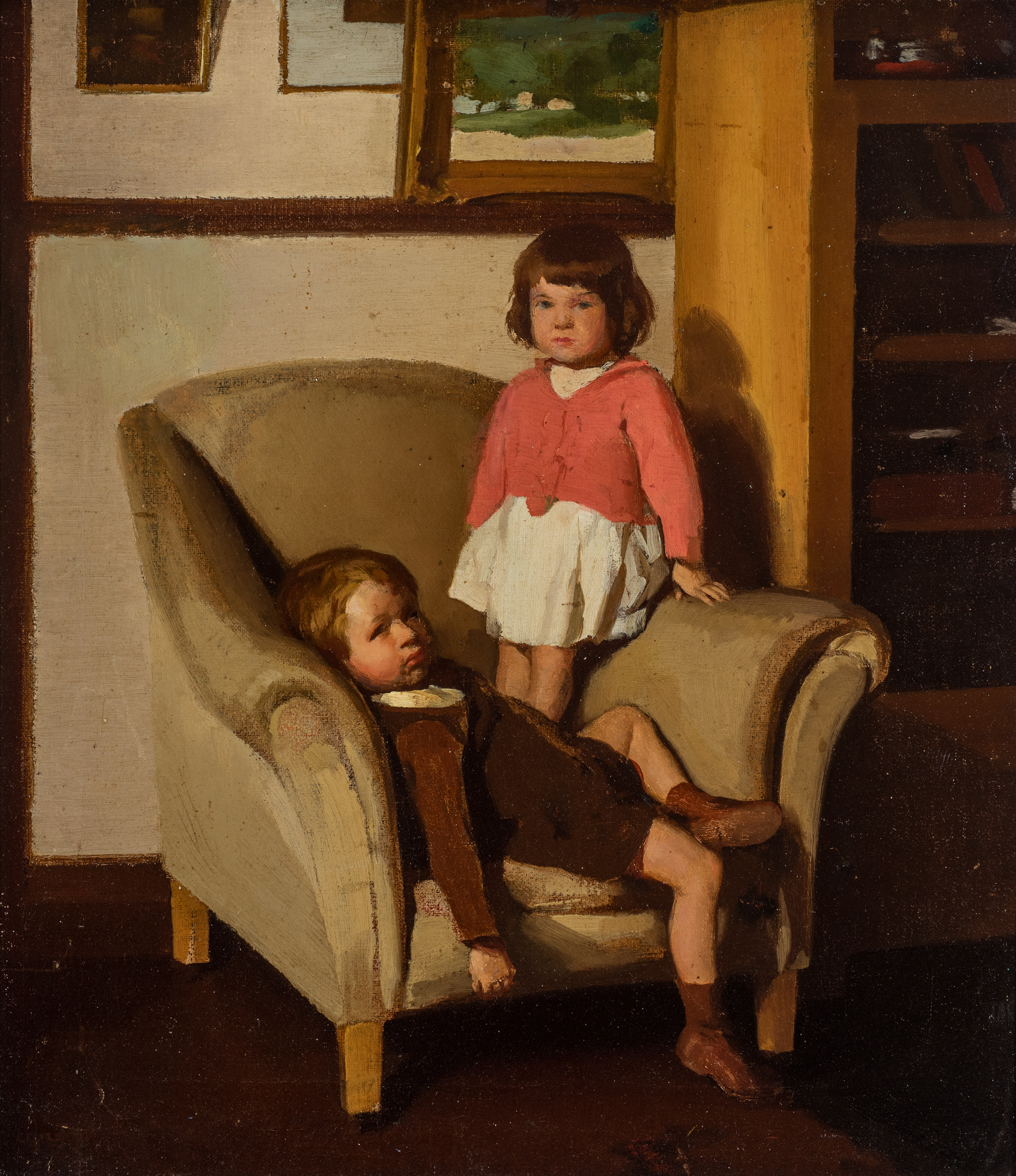Goodman on Leason
Percy Leason’s remarkable portrait of his children Jack and Jean, is one of CAM’s most intriguing treasures, here discussed by local artist and writer Andrew Goodman.

Goodman on Leason
Perhaps perversely, I am drawn to the murky, umber-soaked paintings of the Australian Tonalists. This school is probably best known for landscapes, but Percy Leason’s portrait of his recalcitrant children sits comfortably within it.
Mine is a love–hate relationship to Max Meldrum and his followers. I am scarred somewhat by my teenage induction into the “method”. When I was 14 and a budding painter, I was sent off to Montsalvat every Thursday night to learn from one of the original founders of the artists colony and the last surviving Tonalist. My teacher claimed a passion for Van Gogh, though it was hard for me at the time to see any connection, being forced to spend my time painting murky still lifes and learning to kill any possibility of colour dynamism that might erupt from my palette. Such was the Tonalists’ passion for umber, they were almost a school of monochromists, despite their conservatism and disavowal of modernism’s early twentieth century moves. My work was never considered good enough for me to graduate to painting the model, who was present at these lessons (and those students granted permission lorded over the rest of us), and so I am jealous of Leason for conquering not only objects but heads, as I never had the chance to do.
And yet, despite the dissatisfaction and impatience that grew within me in these painting lessons until I cultivated enough anger to quit, when I began to teach painting years later, I came to appreciate the technique’s potential to help students parse the chaos of painting enough to begin finding a path to creating space. I revisited the school through CAM’s collection, bringing my students to the gallery many times to examine the works closely and to listen to Peter Perry (Director, Castlemaine Art Gallery & Historical Museum 1975–2014) talk to us about the movement. My respect for their craft grew.
The Tonalists were undoubtedly a strange lot—at once wildly bohemian and with little regard for social constrictions on relationships or the roles of women, and yet steadfastly patrician in their devotion to Meldrum and Jorgensen, and artistically conservative. They seemed to approach the world cautiously and view it through umber-coloured glasses, peering through the murky half-light of which they were so fond.
Two of the Artist’s Children is itself a strange painting, and the longer I look at it the stranger it seems to become. The familiar warm browns and tonal stepping out of light and dark are present, but the posing and mood of the children modeling adds a surreal affect to the work. The young boy looks relatively relaxed—disinterested and bored to be sure—but perhaps used to the indignities of posing. The girl is a different matter: she stares at the artist with what I can only describe as unbridled contempt, bordering on the hatred that has an intensity only a small child can sustain. I looked at the painting before I read the title, and so initially I wondered whose poor children the artist had co-opted, only to find it was his own, and then to marvel at the uncomfortable honesty of an artist who would so bravely and faithfully commit his own child’s disdain of his practice to canvas.
Andrew Goodman
September 2020